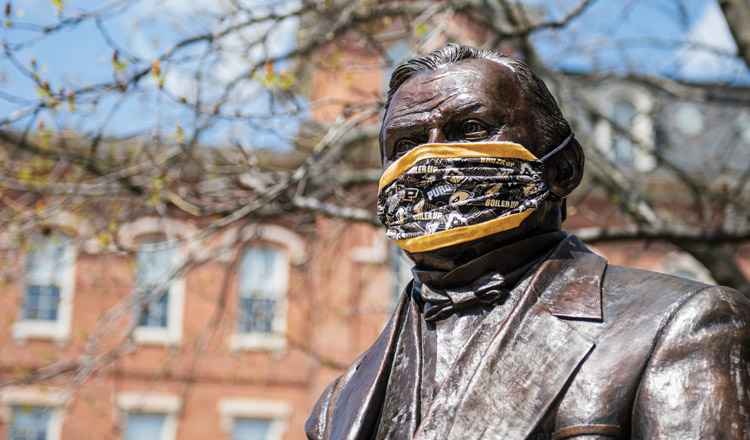
Far From Home
Of the 14,000 students living in University Residences at the start of the semester, about 1,200 remained in campus housing after students were encouraged to move home if possible in March. Travel restrictions, fears of not being allowed back in the US, or concerns over using mass transit during the outbreak left Purdue’s large international population in a lurch.
Ruiji Sun, a doctoral candidate in the Purdue Polytechnic Institute, returned to West Lafayette in December after visiting her family in China.
“My hometown is a small city by the sea in northeastern China. I heard faint rumors about the novel coronavirus before I left China. However, the situation wasn’t that bad until I was back in the states. I was deeply shocked and followed the epidemic in China closely, both via news and my friends, as I went to college in a city very close to Wuhan. As for my family, my concerns for them were very minimal. There weren’t many cases in north China. Most of the cases in China were concentrated near Wuhan, unlike the widespread situation here in the US. Most of China was under lockdown, and so was my city.
“From battling SARS in 2002, the Chinese government has experience managing a pandemic, and people there have awareness of airborne-transmitted diseases. China was able to quickly stifle the spread of the virus through a firm lockdown countrywide. Following spreading of the virus to Europe and the United States, I was shocked by the indifference some people and media exhibited at the beginning of the pandemic. I do believe in the effectiveness of the lockdown and quarantine. And before we develop a vaccine, no one should let their guard down.”
Adrien Bernardinis, a limited-term lecturer in the School of Languages and Cultures, struggled with the decision on whether to return to France. He flew home April 10.
“When it reached Italy, a wave of panic came toward my family because they live close to Italy. They started to feel the effects of mass hysteria. Then it got worse, and the French government decided to call back as many French citizens as possible. At that point, I thought I still couldn’t go home, but my mom — who is a nurse — was in a panic and messaging me three, four times a day because she was getting worried. She started sending me all these messages and calling me and telling me that things were bad.
“It really was hard finding a way to go home. Just finding a plane flying from the US to Europe was hard. In 30 minutes, three flights I booked were canceled. I had 20 hours of travel — 10 hours in a plane and seven hours in a train — with strangers who might be infected. I wasn’t worried I might die, but I didn’t want to carry the virus and infect someone else. But I didn’t really have a choice. I could stay here and keep working like nothing’s happened or go home in case things got worse. The thing is, it got worse in the US pretty fast, so I didn’t feel safe there anymore.”

